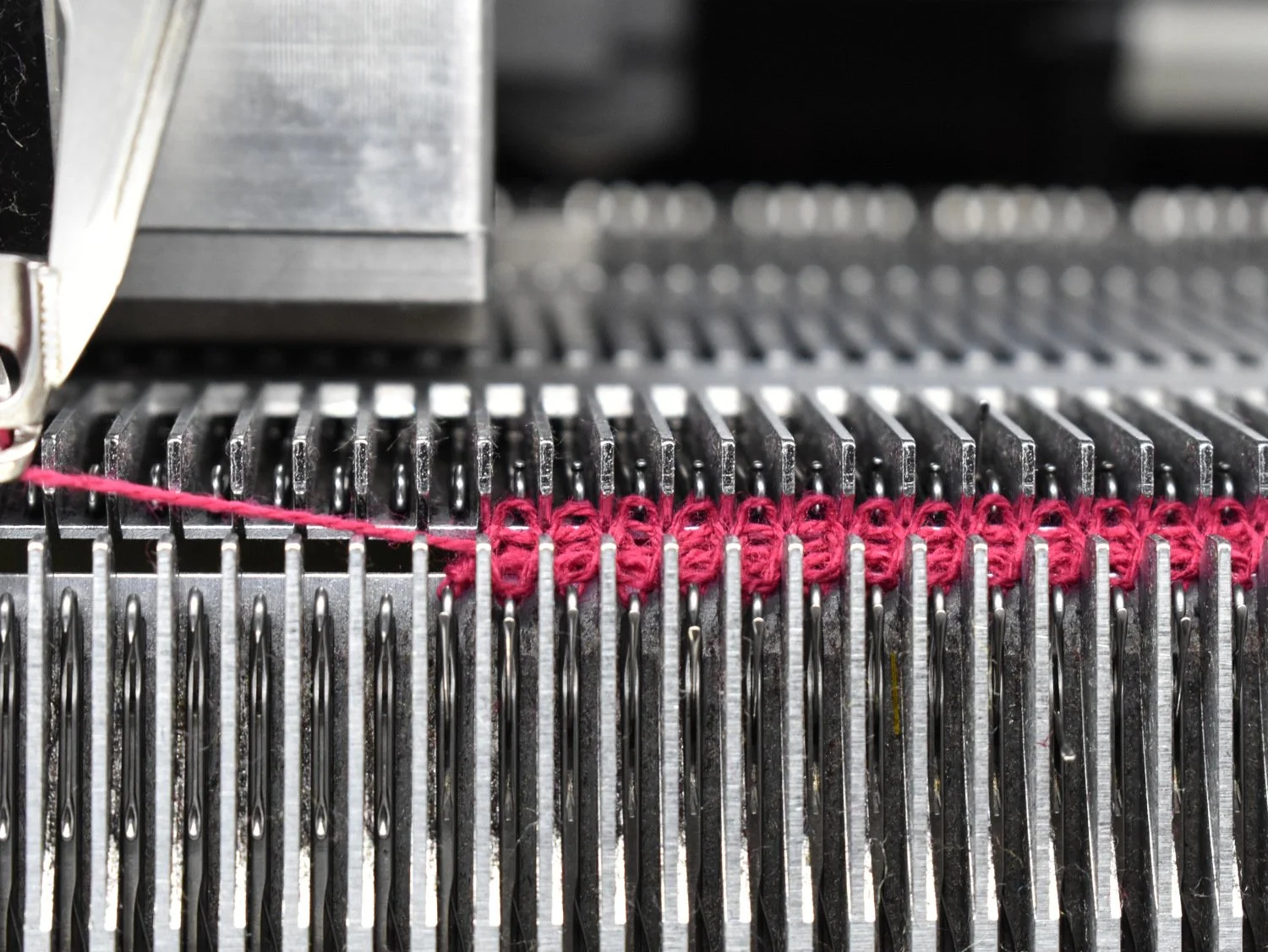The Joy of Knitting with Two Beds
I knit on a Kniterate and a Passap DM80 now, but I learned to knit on a single bed knitting machine. It was a Studio Bulky 8, a single bed machine with similar capabilities to an LK 150. My boyfriend (now husband) gave me the machine for my birthday. We purchased it at School Products. The machine came with two free lessons.
School Products has since changed ownership and now has an online presence only. But in the 80s, it was a knitting machine and yarn center on the 3rd floor of an office building on Broadway in the Flatiron District of Manhattan. There was a large, L-shaped room with floor model knitting machines and walls lined with shelves of coned yarns. A year later, an adjacent room was opened and used for group lessons.
If I'm remembering correctly, School Products was not only the distributor of the Bulky 8 knitting machine, the store also sold Brother and Passap machines. At the time I got my machine, I didn't know how deeply I'd get into the craft. The Bulky 8 was recommended as an excellent starter machine. At the time, I believed it.
On “Starter” Machines
Over the years, however, my thoughts on “starter” machines have changed. When asked by non-knitters, what's a good knitting machine to start with, I now recommend a Passap or a Superba as a first machine. If neither is available or affordable, I recommend starting with a single knitting bed and a ribber attachment. In other words, begin learning both beds from the beginning. Many people even start successfully with a Kniterate (although prior machine knitting experience will always speed up the Kniterate learning process).
I know this goes against the typical machine knitting curriculum at many design schools, where students begin on single-bed domestic machines. That approach may seem more accessible, but I don’t believe it’s the most effective or efficient way to understand how weft knits are constructed. Working with both beds gives knitters a more complete and practical foundation right from the start.
Here’s what I’ve observed: After the first challenging weeks working with two beds, new knitters tend to develop a much stronger grasp of the technical side of machine knitting than those who start with a single bed alone. The concepts click faster. Fluency comes sooner.
What If You’ve Already Started on a Single Bed?
If your journey began with an LK150 or another single-bed machine, there’s nothing to regret. Think of it as the scenic route. You’ve likely learned how to cast on for jersey, and maybe you’ve tackled fairisle, tuck, or even lace. Perhaps you’ve become skilled at hand-manipulated techniques. No knowledge is wasted, and many beautiful stitch patterns can be knitted on a single bed.
But if your goal is to fully explore the breadth of machine knitting, I encourage you to add the second bed as soon as you can. It opens up the possibilities of knitting in a way that single-bed work simply can’t. And in my experience, it accelerates both understanding and creativity.
Tips for Learning
People learn in different ways, but no matter your style, it’s essential to connect each machine operation with the path of the yarn, not just with a button or a symbol. I’ve seen many knitters who know which setting to select for a tuck stitch, for example, but can’t actually identify a tuck when it’s on the needles.
Single-bed knitters sometimes get stuck in stockinette. The ribber can seem like an obstacle. When they do add the second bed, it often becomes the accessory used only for cuffs and rib bands. But the second bed offers much more.
Whatever depth of learning you choose to pursue, you should be able to recognize and understand the difference between a knit, a tuck, and a miss stitch on either bed. How do they work? Why do they work that way? What can they do structurally? What are your machine’s limitations? These operations are not just switches to flip or icons to click when following someone else’s pattern.
Some of the most engaging, satisfying stitches in machine knitting happen on two beds: double jacquards (without floats), ripples (without hand manipulation), brioche (also called cardigan stitch or fisherman’s rib), aran-style cables, racked ribs, and more. And of course, you can still knit single-bed stitches, too.
And Speaking of Racking
If you’re already knitting with two beds, or you’re starting to get comfortable with them, I have a new class you’ll enjoy. The class is free (at this time) and it introduces one of my favorite stitch patterns, a variation of mock crochet made possible with racking. The stitch has a wonderful lacy, openwork structure and is suitable for a variety of fibers.
If you’re enrolled in my Racking Workshop, you already have a version of this class in the knitting mini-lab module. All others can get immediate access to Machine Knitting Mock Crochet — An Introduction to Racking when you sign up here.
O!




